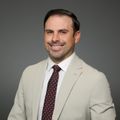About two percent of people are affected by this deformation of the spine, which causes the normally straight spine to curve. While scoliosis can run in families, in most cases its cause is unknown. It frequently develops before puberty and goes unnoticed because it often causes no pain. In adults, scoliosis may develop due to worsening of a slight curvature from childhood, or it could be caused by degenerative diseases of the spine such as kyphosis or osteoporosis.
Scoliosis can limit a person’s ability to move normally. It can also bring on pain and reduced ability to breathe if a misshapen rib cage restricts normal lung growth.
Warning signs include uneven shoulders, a protrusion of one or both shoulder blades, an uneven waist or an elevated hip. A person experiencing any of these symptoms should see a physician for an accurate diagnosis.
Most people with scoliosis don’t need treatment. Early detection is important, because medical observation is needed during the growing years to make sure the curve doesn’t worsen. If intervention is needed, an orthopedic brace may prevent further curvature. In some cases, spinal fusion surgery may be needed to straighten and stabilize the spine.











